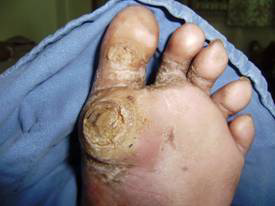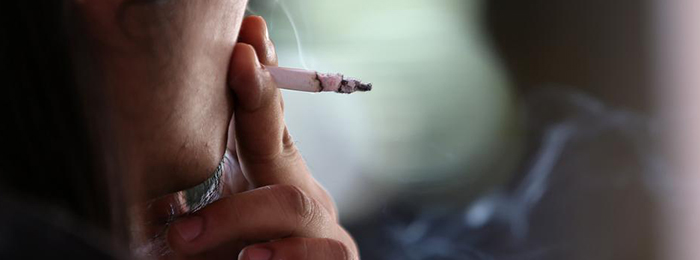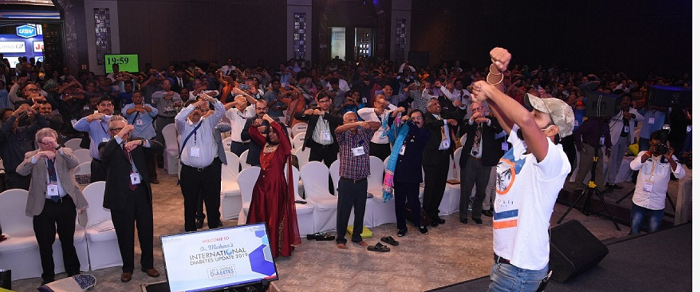Key Points:
Diabetes affects the foot primarily due to the development of nerve disease (neuropathy).
Development of large calluses leads to death of the underlying tissue, forming tropic ulcers.
Appropriate footwear redistributes the foot pressures evenly and prevents the development of calluses.
A podiatrist is an essential member of the diabetes care team who examines the feet of diabetes patients, assesses their risk of developing complications and prescribes preventive or therapeutic measures.
Diabetes affects the foot primarily due to the development of nerve disease (neuropathy). Due to neuropathy, the small muscles of the feet become weak leading to deformities such as claw toes and hammer toes. Presence of these deformities leads to abnormally high pressures being exerted at different parts of the soles of the feet. The foot responds to these high pressures by laying down layers of skin, forming a corn or a callus. Corns and calluses may be painful, but they are more often asymptomatic in diabetes patients who have neuropathy.
Development of large calluses leads to death of the underlying tissue, forming ulcers, which are called tropic ulcers. These ulcers are usually not evident all the way to bone, leading to bone infection (osteomyelitis) which is very difficult to treat. The infection can also spread all the way up the leg and become limb or even life threatening. It is these patients who end up in amputation.


Early assessment of the feet can detect neuropathy and abnormal foot pressures. At this stage, the podiatrist recommends appropriate footwear to redistribute the foot pressures evenly and prevent the development of calluses.
If the patient already has a callus, the podiatrist scrapes away the callus in such a way that the callus is removed without causing an ulcer. Thereafter, if the patient uses appropriate footwear, the callus should not recur.
If the patient already has a thick callus with an underlying ulcer, the podiatrist uses different techniques to heal the ulcer, including total contact casting, felt and appropriate footwear. However, these ulcers are often difficult to heal completely on account of the presence of bone deformities. In such cases, the podiatrist performs limb salvage surgeries which correct the deformities and prevent recurrence of callus and ulcer.



